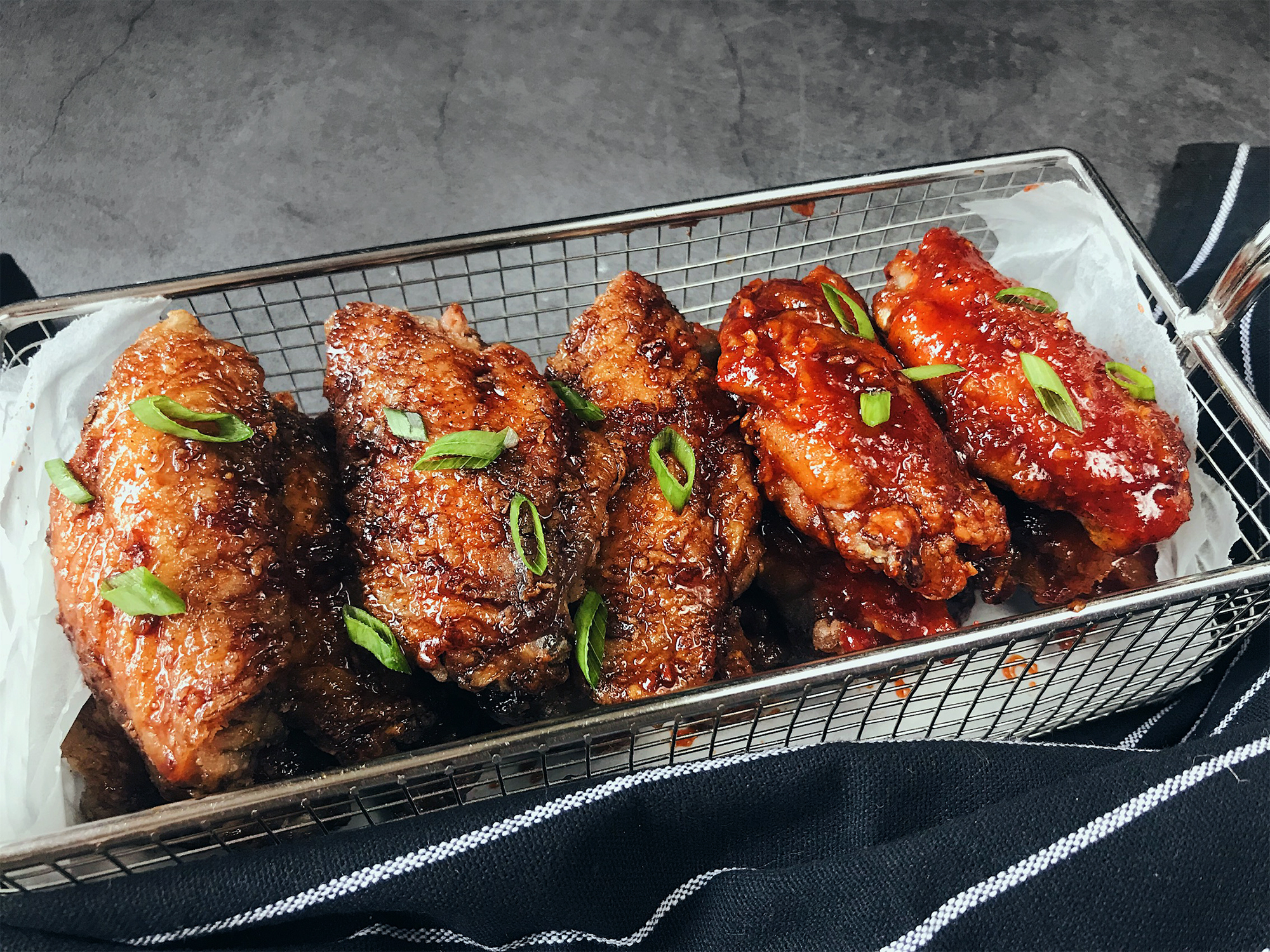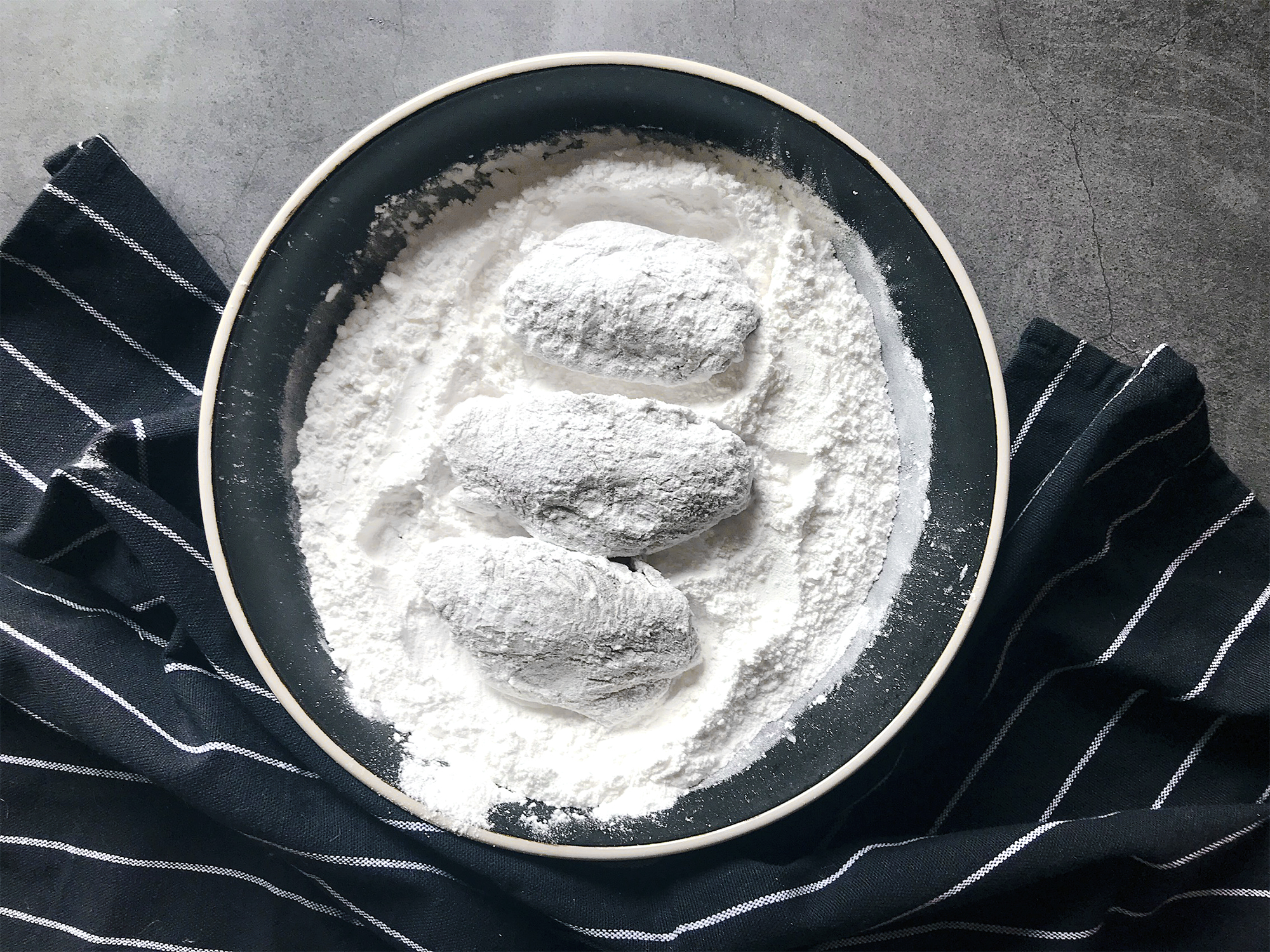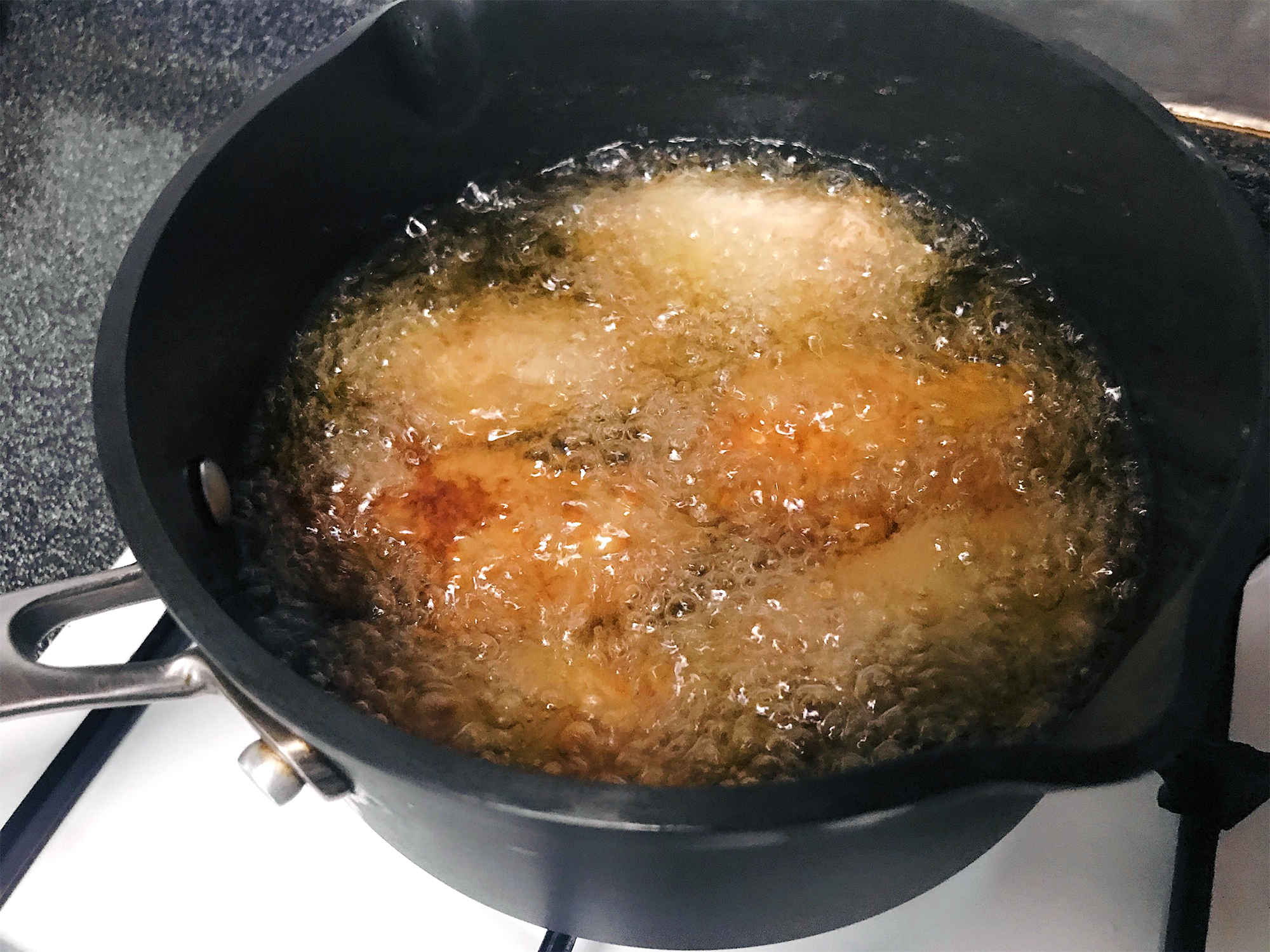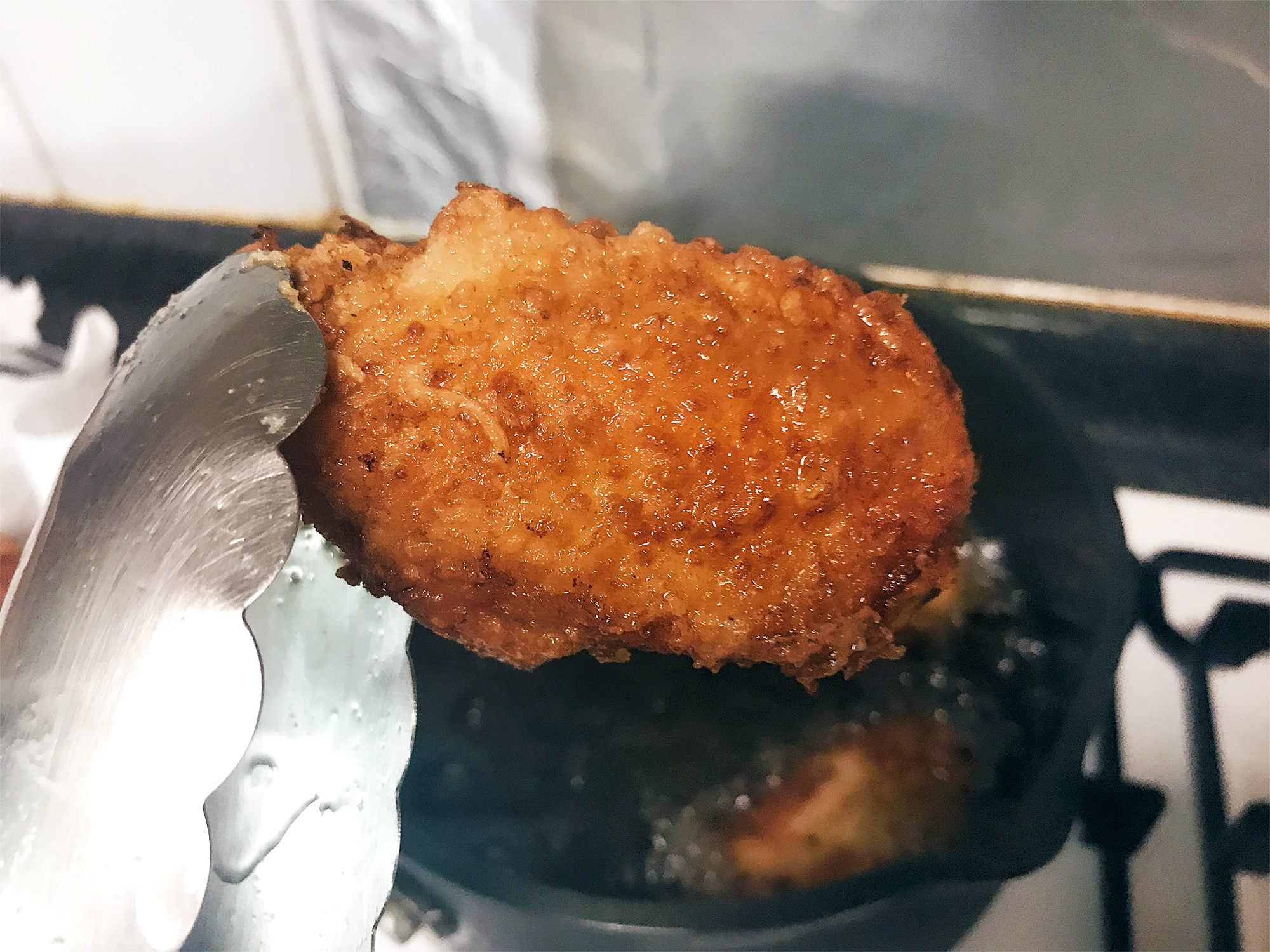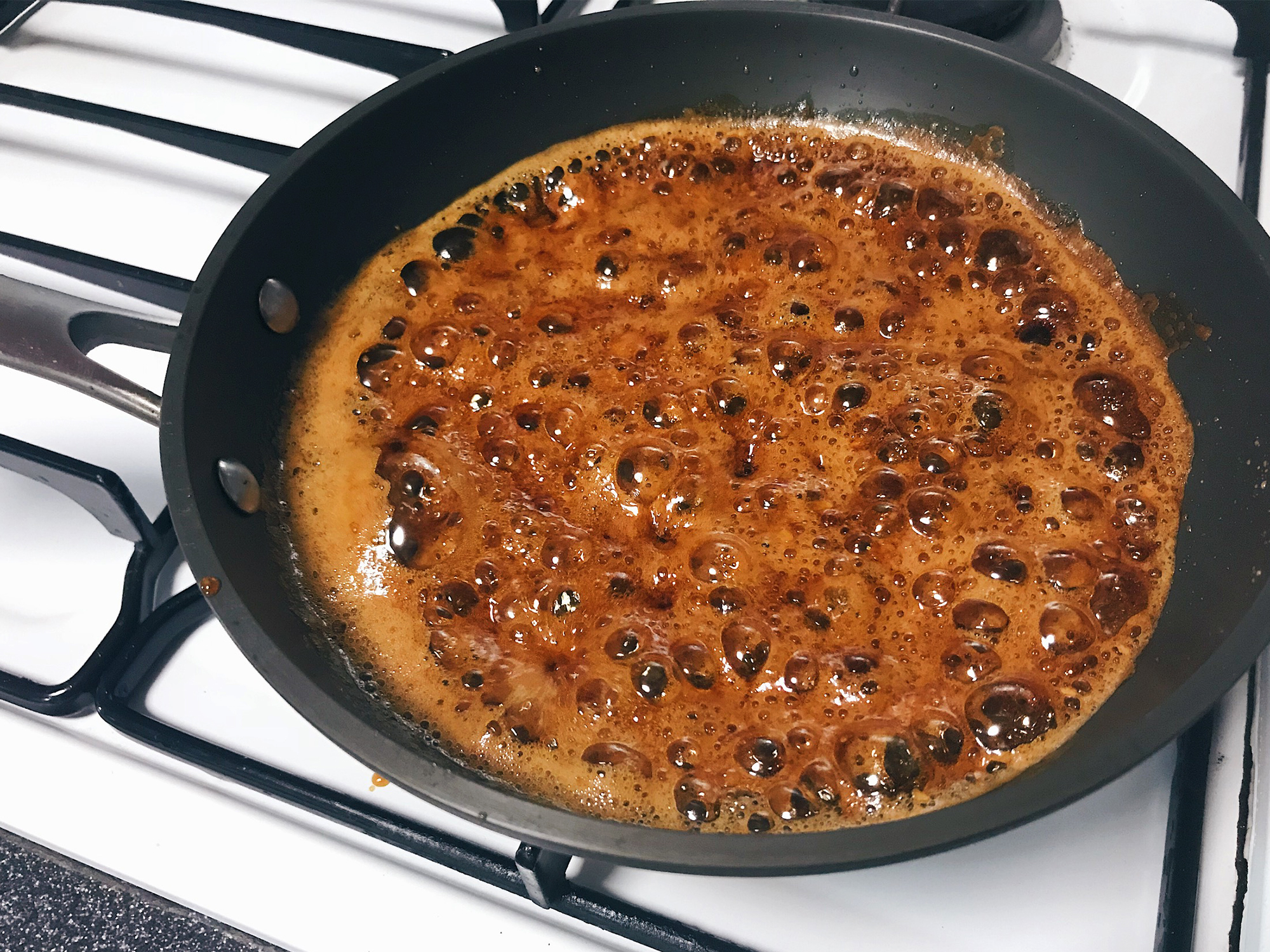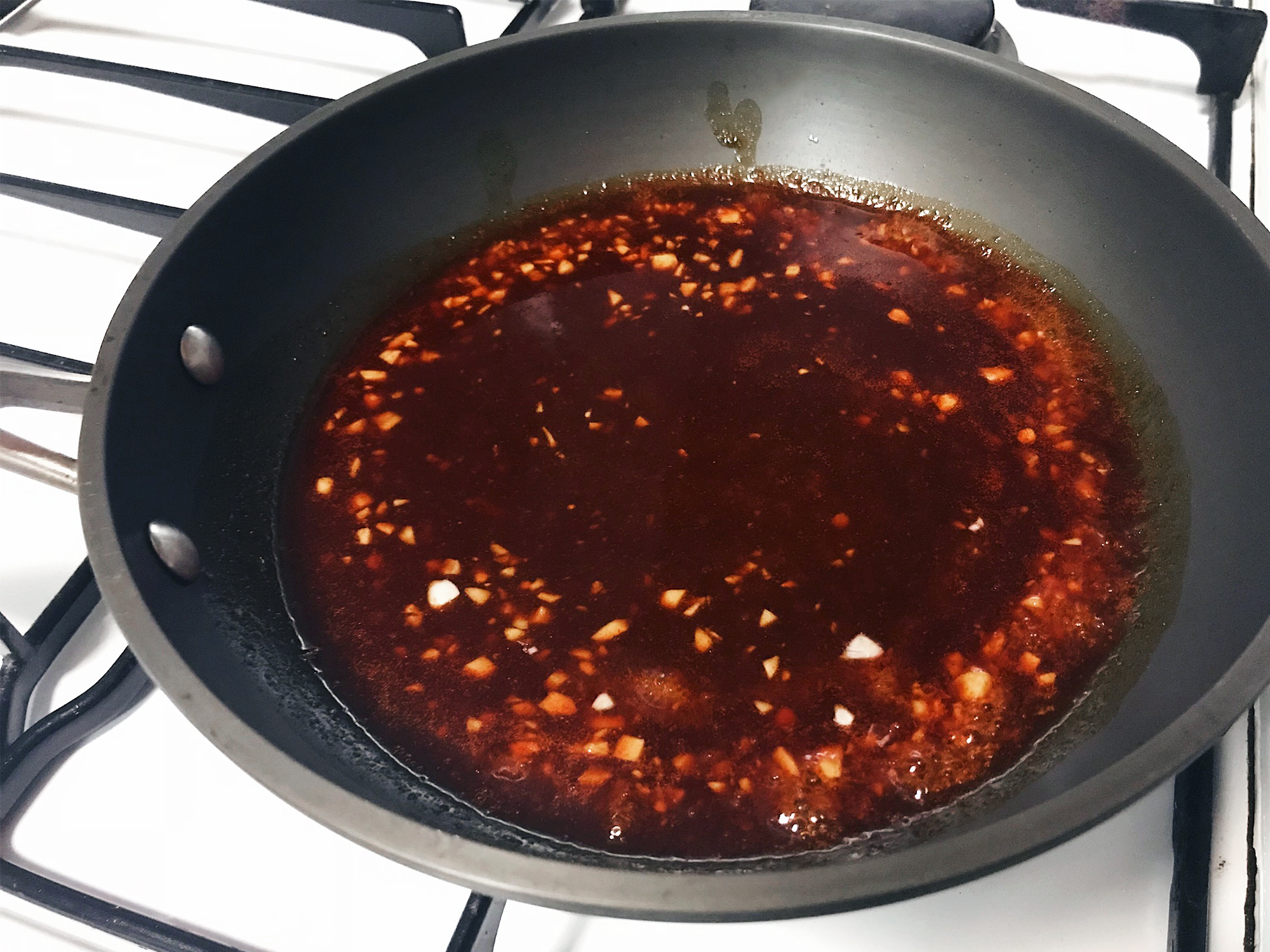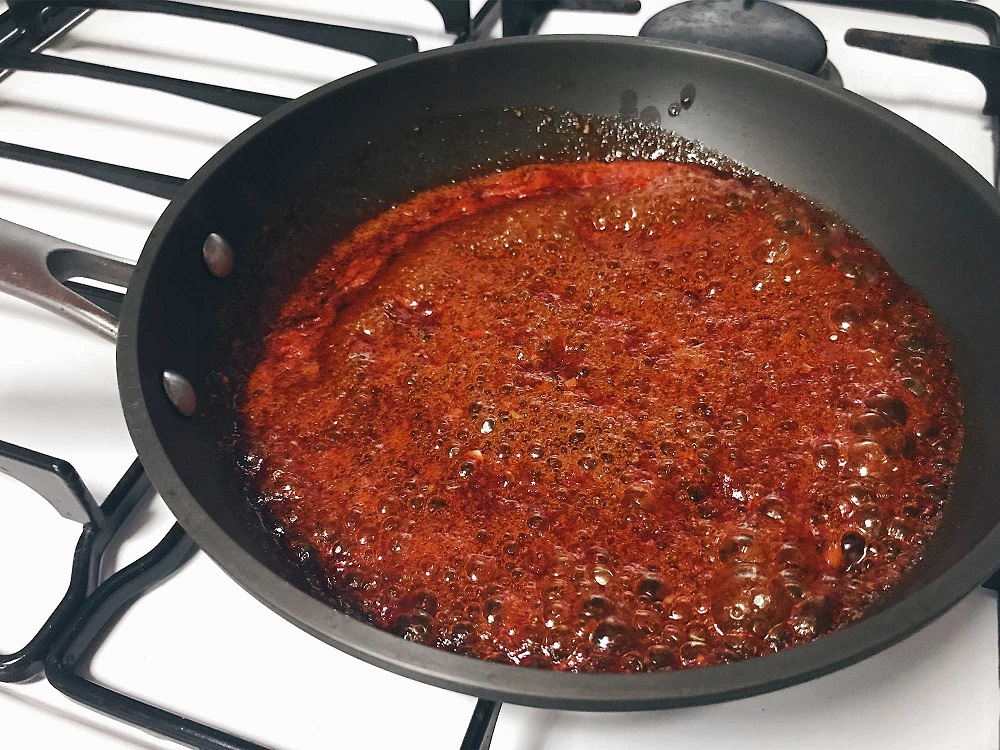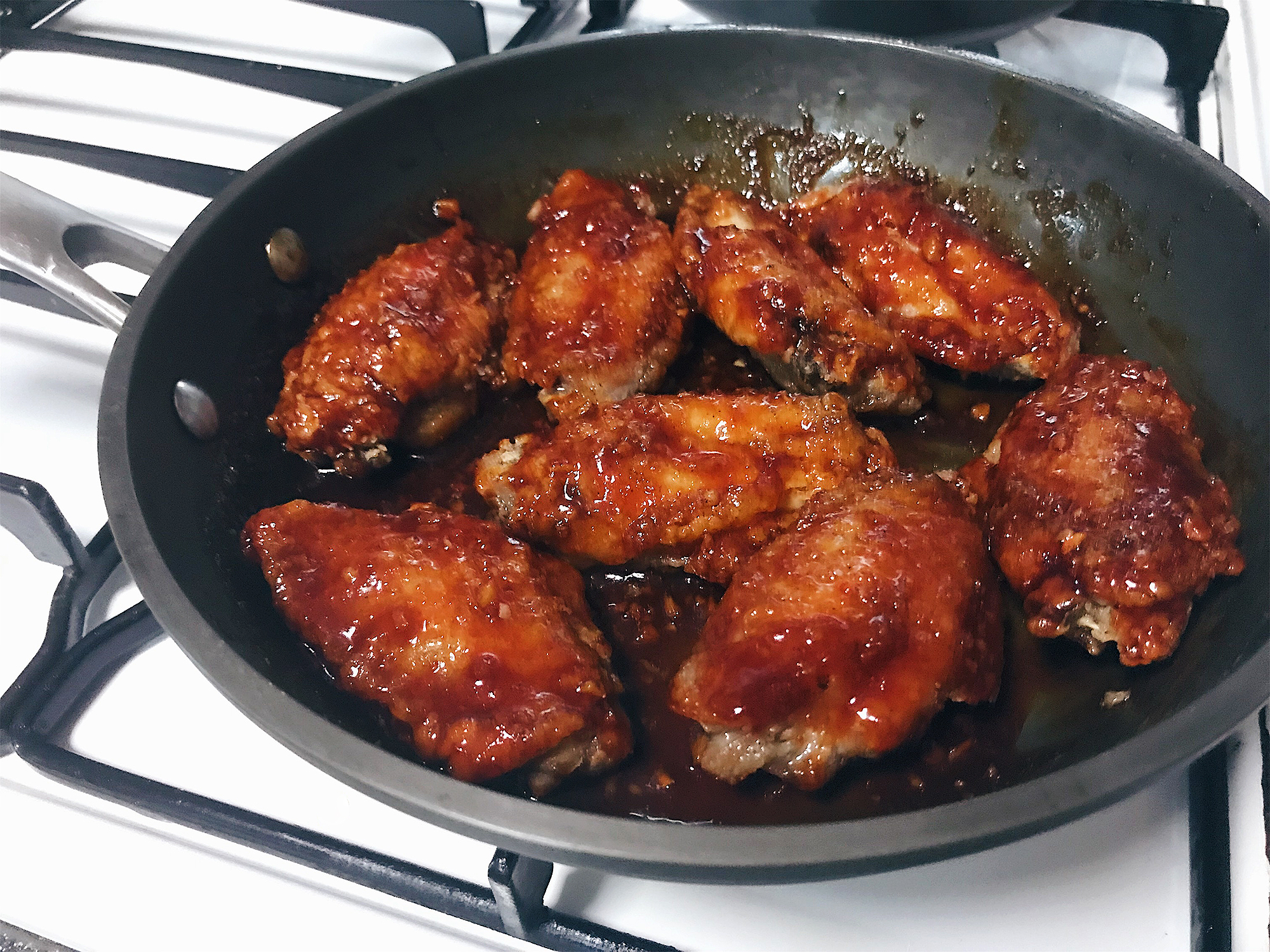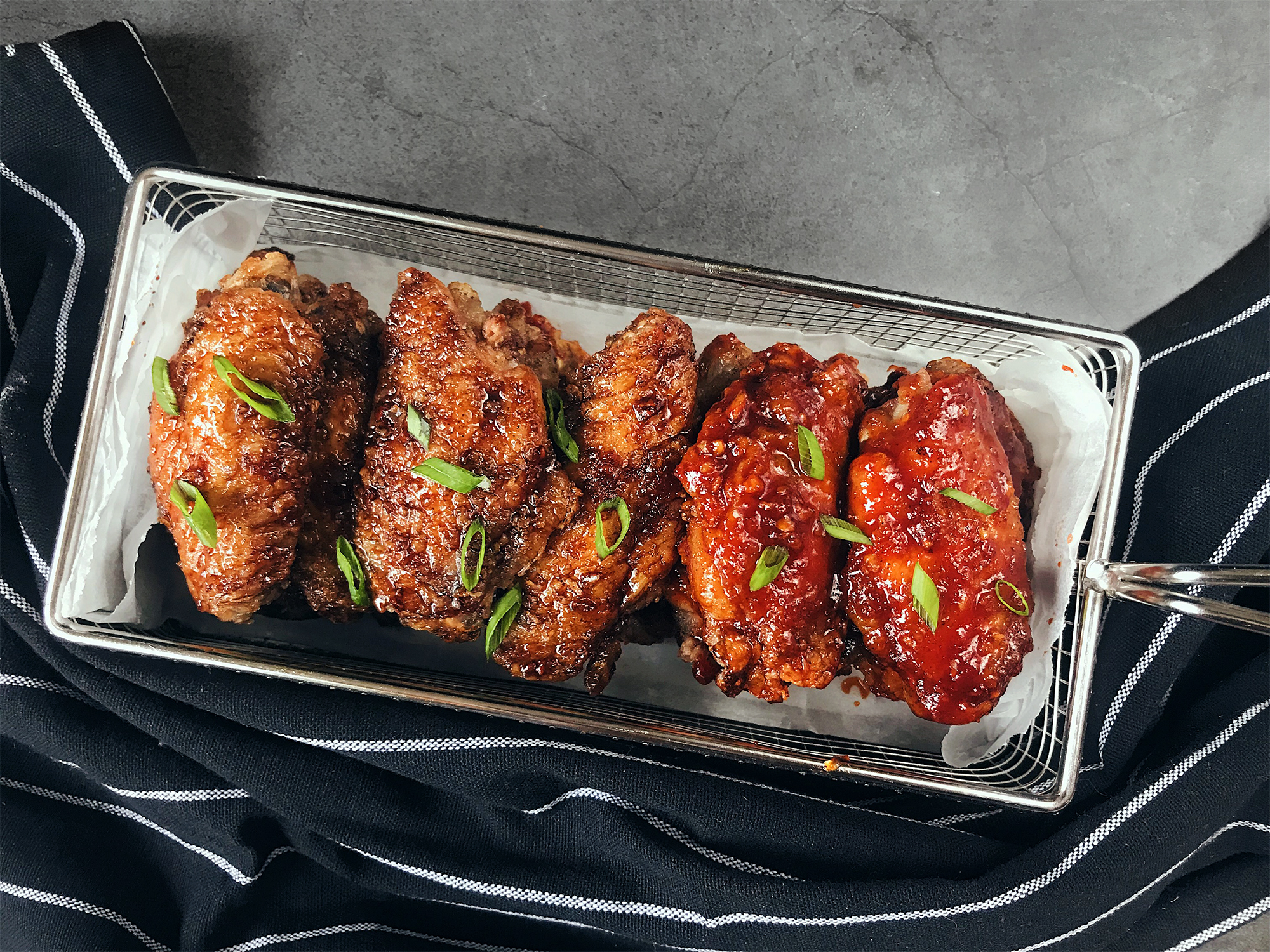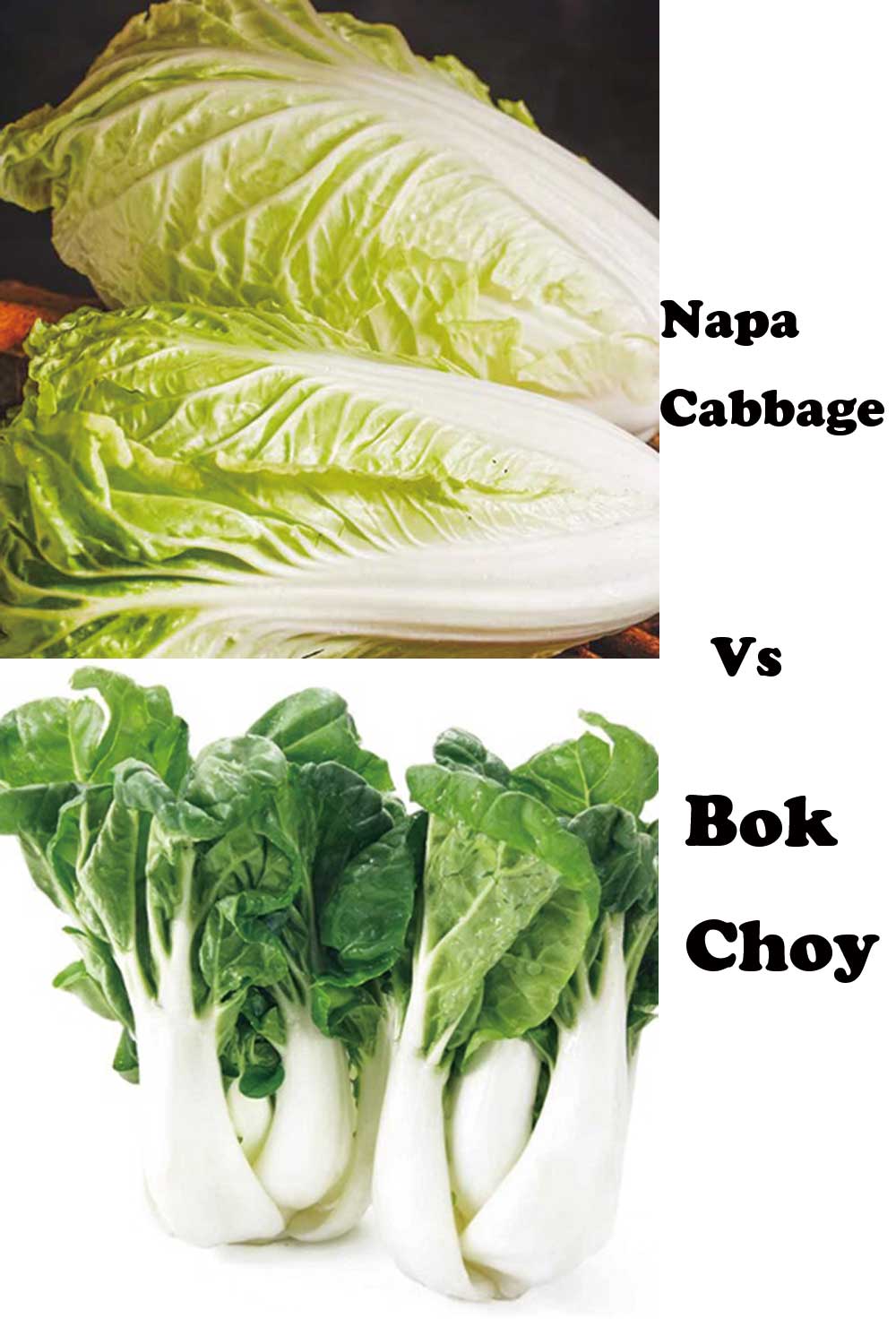When it comes to fried chicken, KFC is second to none (in my opinion at least). No, not Kentucky Fried Chicken, but Korean fried chicken. I concur that while American-style fried chicken tastes good as well, I would choose Korean fried chicken over American fried chicken any day (okay, maybe we have to make an exception for Texas Chicken). How different can American fried chicken be from Korean fried chicken anyway, if they are both deep fried chicken? Well, you might have already noticed, but American-style fried chicken tends to have a significantly thicker crust that is crunchy and well-seasoned with a host of herbs and spices. As American fried chicken is usually eaten without sauces (apart from chilli, ketchup or mayonnaise), the flour coating the chicken is dredged in before deep frying has to be packed full of flavour. On the contrary, Korean fried chicken is usually covered in a thin, crispy coat accompanied by sweet, savoury or spicy glazes. Since the accompanying sauce is piquant enough, there is usually no need to season the coating the chicken is dredged in. While American fried chicken is usually covered with all-purpose flour, Korean fried chicken tends to be covered with cornstarch or rice flour.
What type of flour should I use?
All deep-fried food requires a starchy coating to achieve a crispy/crunchy exterior. Does the type of flour you use to coat the food make a big difference to the final product? Yes, definitely. The rule of the thumb is, the lower the protein content (gluten content) of your flour, the crispier your food will be. Bread flour (12-14%) has the highest protein content, followed by all-purpose flour (10-12%) , pastry flour (9-10%) and finally cake flour (7-9%). Proteins in flours encourage gluten development once flour is mixed with water, so the higher the protein content, the greater the gluten formation. As gluten increases the chewiness and toughness of the final product, greater gluten development results in fried chicken with a tougher, chewier coating.
Cornstarch and rice flour are two gluten-free starches, and therefore give incredibly thin and crispy coatings to fried food. This is one cardinal reason why Korean fried chicken tends to have a thinner, crispier coating than American fried chicken. If you prefer thicker, crunchier crusts, you can mix cornstarch or rice flour with another flour (perhaps cake flour or all-purpose flour) to get a more voluminous crust. Of course, there will also be other factors that affect the crispiness of fried chicken, such as the temperature of oil or even double frying, but it’s undeniable that the type of flour used plays a pivotal role. Next time you don’t have a certain flour a recipe calls for, think about how you want the final result to be and then substitute accordingly!
How to get juicy chicken?
Deep fried chicken can sometimes be overly dry, especially chicken breast. In order to combat that, you need to brine the chicken. What’s the difference between a brine and a marinade? In essence, a brine is a salt-based solution that helps to increase the juiciness of meat while a marinade is usually an acidic mixture that helps to intensify the flavour of the meat. Especially in big chunks of meat that tend to dry out easily while cooking, brining will be a crucial step to take to help the meat stay juicy and moist. Traditionally, brining is done by submerging meat in a salt solution and keeping it refrigerated for several hours, up until a few days. However, while this brining method helps to achieve juicy meat, it does not help to introduce much flavour, and can actually make the meat taste more bland.
Dry brining is an easier solution to attaining juicy meat with better flavour. Instead of submerging the meat in a salt solution, you can simply rub salt over it and keep it i refrigerated for at least 1-2 hours. To cut the long story short, the salt helps to pull water out of the meat which will then dissolve the salt into salt ions, allowing them to better penetrate into the meat and flavour the meat. The juices drawn out of the meat will also be re-absorbed back into the meat over time, therefore allowing it to retain its juiciness. For dry brining, coarse-grain salt is preferred over fine-grain table salt so as to prevent the meat from becoming overly salty.
Rub coarse-grain salt (& pepper, for added flavour) over your chicken wings and keep refrigerated for at least 1 hour prior to frying. Just for your information, 1kg of mid wings gave me 25 wings.
After brining, wash your chicken thoroughly and pat dry. This is highly important as the resulting fried chicken can be very salty if you skip this step. Then dredge chicken wings in a mixture of cornstarch and rice flour. If you prefer to use just cornstarch or rice flour alone, that works as well. I’ve tried using cornstarch and rice flour alone, but I felt that the chicken with purely cornstarch gave me a paper-thin crust while the one with purely rice flour gave me a slightly more voluminous but crumbly coating, which were both not the most optimal result. So I decided a mix of the two would be better.
Deep fry chicken wings in a pot of oil until golden brown. Do this in batches so as to prevent the oil temperature from dropping too low due to overcrowding. If the oil temperature is too low, you will end up with soggy, oily chicken instead.
Perfect time to remove the wings!

Mix your sauces – spicy sauce (yangnyeom 양념) and honey soy sauce. The best part is these two sauces can use almost the same recipe! You will need garlic, honey, soy sauce, rice vinegar and hot pepper paste (gochujang 고추장). If you don’t have honey, you can also use corn syrup or mirin as a substitute.
NOTE: For the honey soy version, you can use the same recipe but omit the hot pepper paste (gochujang).
Add the honey soy sauce into the pan and cook over medium-low heat until the mixture bubbles and comes together. Turn off the heat and mix in the chicken wings. You don’t want the mixture to reduce too much, otherwise the glaze will be viscous and sticky.
Same goes for the spicy sauce – cook it over medium-low fire until it bubbles and reduces slightly, then coat the chicken wings in the sauce.

And indulge in your hot, crispy, juicy fried chicken wings! This is probably one of the best snacks you can entertain guests with – who says no to fried chicken? Pair it with some beer or alcohol and I’m sure your guests will be kept happy all day! You can also experiment with other sauces, or even go for plain fried chicken by seasoning the cornstarch/rice flour with salt & pepper instead. Looking at these chicken wings makes me want to fly to Korea right away…
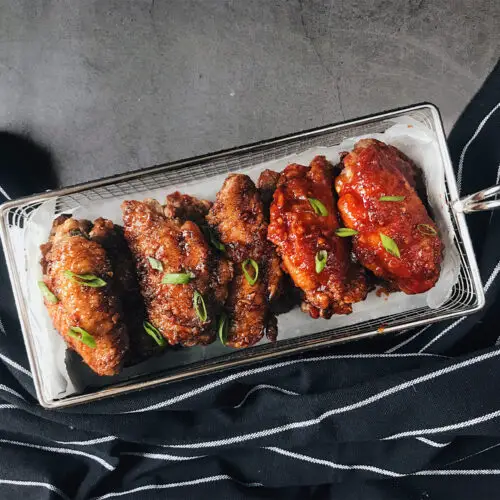
Korean Fried Chicken
Ingredients
- 500 g chicken wings $2.77
- 2 tsp sea salt $0.10
- ¼ tsp pepper $0.022
- ⅓ cup cornstarch + rice flour $0.20
SPICY SAUCE
- 2 tbsp hot pepper paste gochujang ($0.399)
- 2 cloves garlic minced ($0.056)
- 3 tbsp honey $0.45
- 1 tbsp light soya sauce $0.084
- 1 tsp rice vinegar $0.011
- 2 tbsp water
Instructions
- Pat chicken wings dry and rub salt & pepper thoroughly over wings. Refrigerate for at least 1 hour for juicier chicken wings.
- Remove chicken wings from refrigerator and rinse the wings. Then pat dry using kitchen towel. This step is important as it will prevent your chicken from being overly salty. Dredge chicken wings in a mixture of cornstarch and rice flour.
- Heat oil in a saucepot, then deep fry chicken wings until golden brown. Remove from oil and drain excess oil away.
- In a frypan, add all ingredients for the sauce and cook over medium-low fire for a few minutes until the sauce bubbles and thickens slightly. Avoid reducing the sauce mixture for too long, otherwise your sauce will be too viscous. Add chicken wings to the frypan and coat the wings evenly with sauce. Serve.

